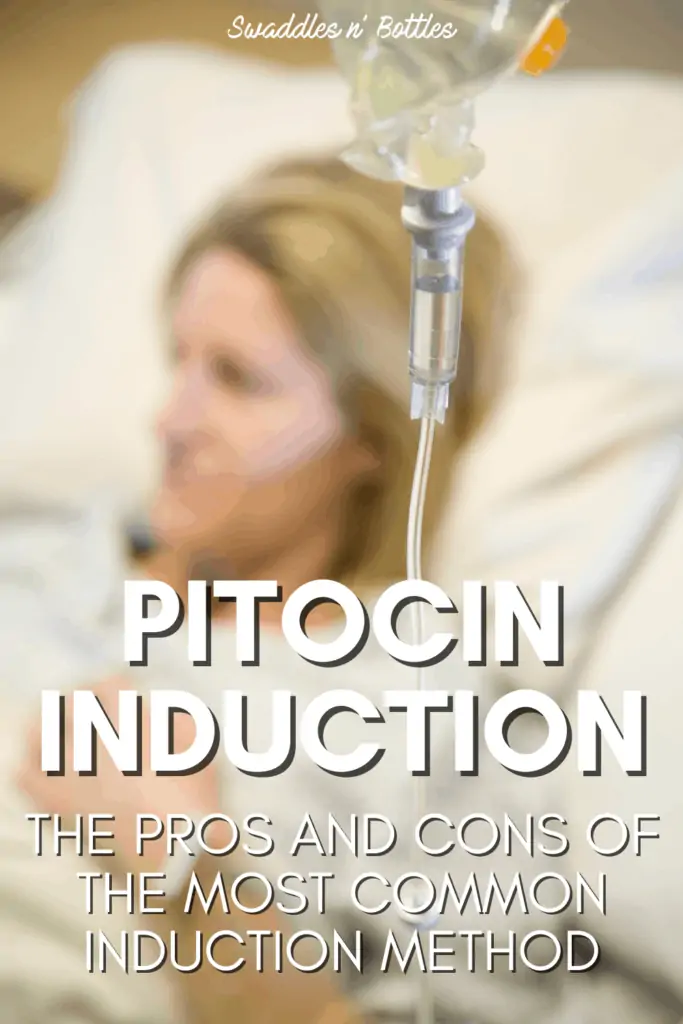
Pitocin Induction: the pros and cons of the most common induction method
Pitocin is an artificially or synthetically made oxytocin hormone given intravenously to a pregnant woman. The primary purpose of Pitocin is to contract the uterus and induce labor. Doctors prescribe this medication to pregnant women who have difficulty in labor. In other words, the drug is given intravenously to begin labor that would lead to natural vaginal birth.
The CDC has reported that around 23% of deliveries in the U.S are induced. Although there are various ways to induce labor, Pitocin is a common drug used in hospitals and maternity clinics. Recent reports show that over 63% of induced labors are achieved through the use of Pitocin. A growing body of research evidence indicates that Pitocin, in general, is a safe, reliable, and medically-controlled labor induction method.
Response times to Pitocin vary from one woman to another. Some pregnant women have mild contractions within 2-3 hours. A pregnant woman who had delivered a baby before will respond faster to Pitocin. However, most women require an increased dosage of Pitocin to enter active labor and may need 6-8 hours for that. Read on!
Benefits of Pitocin Induction
Research has highlighted various reasons for Pitocin induction. The drug is most commonly used to prevent or treat problems like labor dystocia. Pitocin treats difficult, prolonged, and obstructed labor in expectant mothers. Some studies have shown that the use of Pitocin reduces cesarean (C-section) rates.
Doctors prescribe Pitocin to avoid complications due to the Rh factor and ease symptoms of kidney disease and diabetes that can otherwise significantly affect the mother’s health. Pitocin is also injected for treating low amniotic fluid levels, hypertension or preeclampsia, ruptured fetus membranes without labor, uterine infections, and slow fetal growth.
One review study found that Pitocin induction had significantly reduced the rates of C-section. It can speed up the labor, a process known as the augmentation of labor. Another study highlighted that Pitocin induction could result in a small decrease of 2-3 hours in total labor time.
Researchers concluded that even a small reduction in labor time provides relief to the expectant mother. Amniotomy is another method used besides Pitocin to speed up labor in pregnant women. Non-medication methods like walking, movement, acupressure, and bouncing on a yoga ball help facilitate labor.
Downsides of Pitocin Induction
There are various challenges associated with Pitocin induction. A doctor will usually carry out multiple procedures, such as electronic fetal monitoring to see the effect of Pitocin on the uterus and child, regular blood pressure checks, and intravenous drips to deliver fluids and drugs.
Pitocin has a few side effects like other medications and interventions. However, keep in mind that this drug is safe in general, and pregnant women are at low risk of getting serious complications. Let us talk about some possible complications of Pitocin in expectant mothers. Continue reading!
Pitocin can cause frequent contractions in some women, leading to difficult labor, but this is manageable. It can also cause fetal distress and pain, which can be treated with epidural or other pain relievers. Pitocin can also lead to uterine rupture.
It is important to avoid Pitocin induction when the baby is in malposition – i.e., a conducive delivery position. A doctor will avoid giving you this medication if your baby is distressed. In that case, you will be required to undergo C-section.
Health professionals do not prescribe Pitocin to pregnant women with allergies. If you have more than one baby in the womb, it is wise to avoid the medication. Likewise, if you are suffering from preeclampsia or hypertension, the drug can complicate the condition.
Women with placenta previa or any other pregnancy complication must not undergo Pitocin induction. If you had a cesarean section before or had given birth to multiple babies (six times or more), it is crucial to avoid Pitocin induction. In such a situation, the doctor will use other methods to induce labor, such as intentional rupturing of the amniotic sac.
Final Words
Pitocin induction means your doctor will induce or start labor by giving you an intravenous drug called Pitocin. It is a synthetic version of oxytocin, a pregnancy hormone that can help induce contractions and facilitate delivery.












